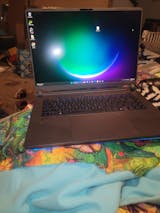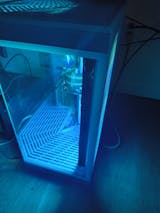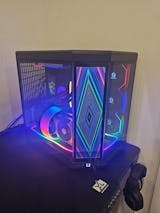Upgrading your graphics card (GPU) is one of the most effective ways to improve gaming performance. But if you’re a beginner, it’s not always obvious when your current GPU is holding you back. You don’t want to spend money on a new card if you don’t need to, but you also don’t want to suffer with laggy, low-quality gameplay. This guide will explain the key signs that it might be time for a GPU upgrade, how to evaluate your GPU’s performance (and other components), and tips on choosing a new card that fits your needs and budget.
Signs You May Need a GPU Upgrade
The first step is recognizing the warning signs of an underperforming or outdated graphics card. Here are some common indicators that you should upgrade your GPU:
-
Poor Game Performance (Low FPS and Stuttering): If you notice games running sluggishly, with frequent frame rate drops or stuttering, your GPU could be struggling (. Modern games are increasingly demanding, and older graphics cards may not keep up. A frame rate consistently below ~30 FPS is widely seen as the minimum for playable smoothness. If you frequently get under 30 FPS even after lowering settings, that’s a clear sign your GPU is lagging behind current game requirements.
-
New Games Won’t Run Well (or At All): One big red flag is incompatibility with new titles. Check the minimum and recommended system requirements of the latest games you want to play. If your graphics card doesn’t meet the minimum requirements (or barely meets them), those games might refuse to run or only run on the lowest settings. When your GPU is below the game’s requirements, or lacks a newer technology the game uses (like a required DirectX version), it’s probably time to upgrade. In short, if new releases struggle on your PC or won’t start, a more powerful GPU is likely needed.
-
Outdated Features or Compatibility Issues: Today’s GPUs offer features like ray tracing (realistic lighting effects) and DLSS/FSR (AI upscaling for better performance). If your current card is too old to support these technologies, you could be missing out on visual enhancements and performance gains in modern games. For example, a game might offer ray-traced graphics that your GPU can’t render, or VR (virtual reality) hardware that requires a stronger, newer GPU. When you find that new hardware or game features aren’t compatible with your GPU, it’s a sign your card is becoming outdated .
-
Overheating or Crashes Under Load: While many performance issues are due to lack of power, sometimes the GPU may be failing or overworked. If your PC frequently crashes or shows blue screen errors only when doing graphics-intensive tasks (gaming, video editing, etc.), the graphics card could be the culprit. Similarly, if the GPU is running hotter than its safe maximum temperature during games (check with monitoring tools), it might be struggling to handle the workload. First, ensure your PC is clean and well-ventilated. But if you still get overheating or crashes whenever the GPU is under heavy stress, an upgrade or replacement may be necessary for your failing GPU.
(Note: Other issues like faulty drivers or malware can also cause some of the above symptoms. But if you’ve ruled out software problems and your GPU is consistently underperforming or unstable, hardware limitations are likely to blame.)*
Assessing Your GPU’s Performance
Before rushing to buy a new graphics card, it’s important to evaluate how your current GPU is performing in your typical games and tasks. Here are simple steps to assess your GPU’s performance in beginner-friendly terms:
-
Check Your Frame Rates: Frame rate (measured in frames per second, FPS) is the clearest indicator of GPU performance in games. Many games or game launchers have built-in FPS counters. For example, if you use Steam, you can enable the in-game FPS counter via Steam > Settings > In-Game > FPS Counter to display your frame rate while playing. Play a few of your favorite games and note the average FPS at your normal graphics settings and resolution. If you’re consistently getting low FPS (again, around 30 FPS or lower) and the gameplay feels choppy, your GPU is struggling to keep up. On the other hand, if frame rates are high (60+ FPS) and smooth, your GPU is still handling those games fine.
-
Observe Graphics Quality vs Performance: Try adjusting your game’s graphics settings to see how your GPU handles changes. If you have to drop from High to Low settings just to get playable performance, it indicates the GPU is at its limit. Newer GPUs can sustain high or ultra settings with good FPS, so needing minimal settings for newer games is a hint your card is aging. Additionally, if older games (that used to run fine) now only run acceptably at reduced settings or resolution, it’s a sign your GPU is behind current standards or possibly experiencing hardware degradation.
-
Benchmark Tools (Optional): As a beginner, you don’t need complex benchmarks, but you can use simple tools or in-game benchmarks (many games have a “Benchmark” option in their settings) to test your GPU. These tests will push the graphics and give you a score or FPS result. You can compare your results with online averages for your GPU model to see if it’s performing as expected. If your GPU’s benchmark scores are much lower than normal for that model, it might indicate a problem with your system (thermal throttling or other issues). If the scores are normal but still not high enough for the games you want to play, that tells you an upgrade would improve things.
Checking for System Bottlenecks
Sometimes a gaming PC feels slow not just because of the graphics card, but due to other components creating a bottleneck. A bottleneck means one part of your system is maxed out and holding back the overall performance. Here’s how to check if your GPU is truly the weakest link or if another component (like the CPU) is the real cause of slowdowns:
-
Monitor GPU and CPU Usage: While running a game, you can use Windows Task Manager (press
Ctrl + Shift + Escand go to the Performance tab) or a tool like MSI Afterburner to see how much of your GPU and CPU are being used. Look at the utilization percentages of both.- If your GPU usage is very high (close to 100%) during gameplay while your CPU usage is comparatively low, then the GPU is likely the component limiting performance. In this case, your graphics card is working as hard as it can (fully utilized), and it’s still not achieving the desired performance – a strong hint that a more powerful GPU could boost your frame rates.
- If your CPU usage is at 90-100% while the GPU usage is low, your processor is the bottleneck instead. This means the CPU is struggling to keep up with the game’s demands, and even a better graphics card wouldn’t help much until the CPU is upgraded. In this scenario, your money might be better spent on a CPU upgrade rather than a GPU, since the graphics card is not being fully utilized due to the slow processor.
- Assess Other Factors: RAM can also affect performance (though to a lesser extent for graphics). If you have very low memory (RAM) or an older slow hard drive, those can cause stuttering and long load times too. Make sure you have enough RAM (at least 8GB, preferably 16GB for modern gaming) and ideally an SSD for faster game loading. These factors don’t directly impact FPS like the CPU/GPU do, but they contribute to overall gaming smoothness.
By checking for bottlenecks, you ensure that upgrading the GPU will actually solve your performance issues. For example, a high-end GPU won’t help if your CPU can’t feed it data fast enough. In summary: upgrade your graphics card when it is the component holding back your system’s gaming performance, not when something else is the culprit.
Is Upgrading Cost-Effective?
Before you invest in a new GPU, take a moment to decide if a upgrade makes sense for your situation. Here are some considerations to determine if upgrading is worth the cost:
-
Age and Generation of Your Current GPU: Graphics cards generally have a life cycle of a few years in terms of top-tier performance. Many gamers find they get 3-5 good years out of a GPU before newer games really tax the card High-end cards might last even longer if your performance needs don’t increase drastically, whereas lower-end cards might feel outdated sooner. If your card is relatively recent (1-2 years old) and was mid-to-high end for its time, it should still handle most new games decently (perhaps with lowered settings). In that case, upgrading might not give you a huge leap in experience for the money spent. Conversely, if your card is quite old (five or more years), the improvements in newer GPU generations are usually significant. For example, someone with a 10-year-old GPU will see a massive performance jump by upgrading, whereas someone with a 2-year-old GPU might see a more modest gain.
-
Current Performance vs. Desired Performance: Ask yourself if your current setup is truly insufficient for your needs. Are you unable to play a game you really want to enjoy? Or do you simply want higher graphics settings out of curiosity? If you’re mostly satisfied (you can play all your games by tweaking some settings), you might get by for now and upgrade later when the benefits will be bigger (and perhaps prices lower). But if you find yourself unable to do what you want – e.g. you have to run everything on minimum settings or you can’t run a new game at all – then the upgrade is likely worth it.
-
Cost of Upgrade (and Potential Extras): Research the price of the GPU you’re considering and compare it to the performance increase you expect. Sometimes a minor upgrade (say, one tier up) isn’t cost-effective – spending a lot of money for only 10% more performance usually isn’t worth it. It can be better to wait and do a bigger upgrade later. Also factor in if upgrading the GPU will require other upgrades. A more powerful card might require a stronger power supply or fit in your case differently (more on that below). These add to the cost. In some situations, if your whole system is quite old, you might consider saving for a fuller upgrade (new CPU, RAM, etc. along with the GPU) to avoid imbalance. A powerful new GPU combined with very old supporting hardware might not deliver its full benefit. Make sure your other components can at least support the new GPU’s performance so you get your money’s worth. Overall, weigh the expense of the card (and any supporting upgrades) against how much it will improve your gaming experience.
By considering these factors, you can decide if a GPU upgrade is the best use of your money right now or if you should hold off a bit longer. Remember, the goal is to eliminate major slowdowns and enjoy your games, not just to have the latest hardware. If your games are running fine, you don’t have to upgrade yet. But if you’re hitting the limits and it’s impacting your fun, a well-chosen upgrade can be very rewarding.
Tips for Choosing a New Graphics Card
Once you’ve determined that you should upgrade to a new GPU, the next step is picking the right card. There are many models and specifications out there, but beginners can focus on a few key factors to make an informed choice:
-
Budget and Performance Needs: Decide how much you want to spend and what you need the card to do. Graphics cards come in different tiers from budget-friendly to extreme high-end, and the prices vary widely. It helps to balance your budget with the performance you’re looking for. For example, if you mainly play indie or older games at 1080p resolution, a mid-range or budget card will suffice; you don’t need a $1000 top-of-the-line GPU. On the other hand, if you want to play the latest AAA games at 1440p or 4K with high settings, investing in a mid-high range or flagship card might be justified. There’s usually a sweet spot where you get the best value for money. (In fact, reviewers often provide options for every budget – whether you want the fastest card, the best value pick, or the best at a given price. Figure out your own “good enough” level of performance and find a card in that category. It’s easy to be tempted by expensive GPUs, but for many gamers, a solid mid-tier card offers excellent performance at half the price of the top-tier models.
-
Power Supply & Compatibility: Before buying, ensure your PC can actually support the new card. Check your power supply unit (PSU) to see if it has enough wattage and the right power connectors for the GPU you want. Newer, more powerful GPUs require more electricity. For example, a card like the RTX 4090 needs a very robust PSU (around 600W or more) to run safely . Look up the recommended power supply wattage for the GPU model and make sure your PSU meets that. Also check if your PSU has the proper PCIe power cables (6-pin or 8-pin connectors) that the card needs. Next, consider the physical size of the graphics card: high-end GPUs can be quite large. Verify the card’s length, width (number of slots it occupies), and even height from the specifications on the manufacturer’s site, and measure the free space inside your PC case. Make sure the new card will fit in your case without obstructing other components. If the card is very long or thick, your PC case might need to be a mid-tower or full-tower to accommodate it. It’s always a good idea to double-check these details to avoid surprises when you try to install the card. Lastly, ensure your CPU is up to the task of pairing with the new GPU. As mentioned earlier, if your processor is very old or low-end, it could bottleneck a powerful new graphics card. It doesn’t mean you need the absolute latest CPU, but there should be a reasonable balance (for instance, pairing an entry-level CPU with a high-end GPU is not ideal). Check if other gamers or reviewers use a similar CPU/GPU combo and whether it performs well. In short: power and compatibility checks will save you from installation headaches and make sure you can actually use the performance you’re paying for.
-
Future-Proofing (Longevity): A good strategy when choosing a GPU is to think a bit about the future games and tech you might want to experience. While no card can be truly “future-proof” (technology always marches on), you can choose a model that gives you some extra headroom. This means maybe picking a card that is slightly more powerful than what you need right now, so it will last a few years. Consider GPUs that support the latest features (such as ray tracing and AI upscaling technologies) if those are important to you, since these features are becoming standard in new games. Also, look at the VRAM (video memory) on the card – modern games are starting to use more VRAM, so getting a card with, say, 12GB of VRAM instead of 8GB could help with longevity in future titles. Of course, balance this with your budget – you don’t have to get the absolute newest model, but for example, opting for a newer generation mid-range card over an older generation high-end card might give you better long-term driver support and feature set. Read some reviews or gaming hardware news to gauge what upcoming games might require. If you plan to keep your GPU for 4-5 years, aim for a model that is well-reviewed for reliability and has performance headroom for new game releases. Essentially, don’t buy something that barely meets today’s needs if you can afford a bit more, because game demands will likely increase in the next couple of years.
-
Brand and Model Considerations: The two major GPU chip manufacturers are NVIDIA and AMD. Both make excellent GPUs at various price points. For a beginner, either brand can be fine – it often comes down to the specific model’s performance and price. NVIDIA cards tend to have features like CUDA (useful for some creative apps), and technologies like DLSS (AI upscaling) and usually slightly stronger ray tracing performance. AMD cards often offer more VRAM for the money and might perform better in pure rasterization (traditional rendering) at a given price point, and they now have their own FSR upscaling tech. It’s a bit of a tech soup, but in practical terms, you should read or watch reviews for the specific cards you’re considering. See how they perform in the games you care about, and if there are any quirks (driver issues, heat/noise levels, etc.). Also, different card manufacturers (brands) like MSI, ASUS, Gigabyte, etc., sell their versions of NVIDIA/AMD GPUs with different coolers and clock speeds. For a beginner, you don’t need to worry too much about the slight differences there – just avoid very cheap no-name brands, and if one model is known for being quiet or compact and that matters to you, take it into account. Otherwise, focus on the core GPU (e.g., RTX 3060 vs RX 6700 XT, etc.) and your budget.
Finally, when choosing, make sure to purchase from a reputable retailer with a good return policy, just in case the card doesn’t fit or something isn’t compatible. And keep your old card until the new one is up and running smoothly, as a backup plan.
Upgrading your GPU can breathe new life into your gaming PC, but timing the upgrade is key. By watching for signs of performance decline, checking your system’s bottlenecks, and carefully weighing the cost and benefits, you can make an informed decision on when to upgrade. If you do decide to get a new graphics card, choosing one that fits your budget, power supply, and gaming aspirations will set you up for a satisfying boost in performance. With the right GPU, your games will run smoother, look better, and you’ll be more “future-proof” for the next wave of game releases. Happy gaming, and enjoy your upgraded graphics when the time comes!
















